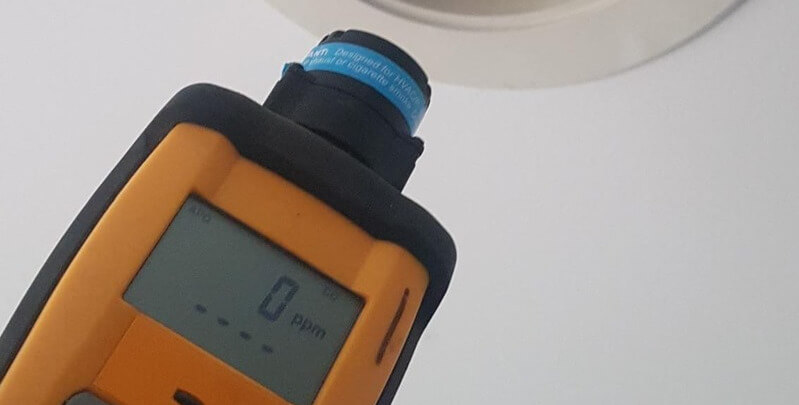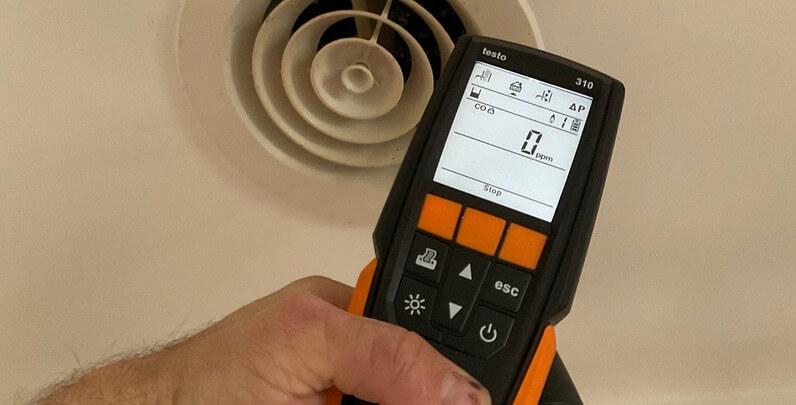Why Do We Need to Conduct Carbon Monoxide Testing?

Carbon monoxide testing plays a critical role in ensuring the safety and well-being of individuals in various environments. Carbon monoxide (CO) is a colourless, odourless, and highly toxic gas that multiple sources can produce.
The potential dangers of carbon monoxide exposure are significant, from faulty appliances to blocked chimneys. Therefore, regular testing is essential for early detection and prevention of this silent threat.
Understanding Carbon Monoxide
Carbon monoxide is a poisonous gas that forms when fuels such as gas, oil, coal, or wood are burned incompletely. It is often found in homes, workplaces, and other environments where fuel-burning appliances or equipment are present.
Familiar sources of carbon monoxide include gas stoves, furnaces, fireplaces, water heaters, generators, and vehicle exhausts. Due to its nature, carbon monoxide can quickly accumulate in enclosed spaces and pose serious health risks.
Exposure to carbon monoxide gas can lead to various health issues, ranging from mild symptoms to severe complications and even death. Initial symptoms of carbon monoxide poisoning often resemble the flu, including headaches, dizziness, nausea, confusion, and fatigue.
Prolonged or high-level exposure to natural gas can result in unconsciousness, organ damage, and fatalities. The importance of early detection and prevention cannot be overstated, as immediate action can save lives.
How Often Should you Have Carbon Monoxide Testing?
Conducting this gas appliance test at least once a year is generally recommended in residential settings. However, factors such as appliance age, maintenance history, and ventilation and heating changes should be considered to determine the appropriate testing intervals.
Reasons to Conduct Carbon Monoxide Testing
Ensuring the safety of your home or workplace is paramount, and regular testing is a crucial aspect of achieving this goal. In residential and commercial settings alike, the following reasons highlight the importance of conducting carbon monoxide testing:
Identifying Potential Sources of Carbon Monoxide Leaks:
Regular testing helps detect and locate possible sources following symptoms of carbon monoxide leaks, such as malfunctioning appliances, blocked chimneys, faulty gas appliances and heaters, or faulty ventilation systems. By pinpointing these issues early on, appropriate measures can be taken to address and rectify the leak, preventing further exposure.
Preventing Accidental Poisoning and Health Complications
Carbon monoxide is responsible for a significant number of accidental poisonings worldwide. By conducting regular testing, individuals can proactively identify any carbon monoxide presence, allowing them to take immediate action and protect themselves and their loved ones from potential health complications.
Compliance with Regulations and Building Codes
Many jurisdictions have regulations and building codes that require carbon monoxide testing in specific settings, such as residential buildings, workplaces, and commercial properties. Compliance with these requirements is essential to ensure the safety of occupants and avoid legal repercussions.
Protecting Vulnerable Groups
Specific individuals, such as infants, elderly individuals, pregnant women, and those with pre or co-existing health conditions, are more susceptible to the adverse effects of carbon monoxide. Regular testing helps create a healthy and safe environment for everyone, especially those more vulnerable to the gas’s harmful effects.
Maintaining Proper Functioning of Appliances and Equipment
Testing for carbon monoxide is a valuable preventive tool to find malfunctioning or broken gas appliances or equipment that might be generating harmful gas levels. Early detection can help prevent breakdowns co leaks, damage, and even accidents when gadgets and gas appliances are malfunctioning.
Carbon Monoxide Testing Methods
Several methods, tests and tools are available for carbon monoxide testing, each serving a specific purpose in detecting and measuring the presence of this gas.
Visual Inspection for Signs of Carbon Monoxide

In a visual inspection, appliances, machinery, and ventilation systems are checked for any soot, rust, or excessive condensation that can indicate a component leak or a carbon monoxide leak. Even though this method can hint at some potential problems, it cannot quantify carbon monoxide or part leakage precisely.
Using Carbon Monoxide Detectors and Alarms
Carbon monoxide detectors and alarms are essential devices that can be installed to detect and monitor the air for carbon monoxide continuously. These devices sound an alarm when certain levels of carbon monoxide are detected, providing an early warning to occupants.
It is crucial to place detectors strategically near potential sources of carbon monoxide and to install, regularly test and maintain them according to the manufacturer’s instructions.
Professional Testing and Analysis
Professional carbon monoxide testing involves hiring certified experts who use specialised equipment to accurately detect and measure carbon monoxide levels.
This well-tested method provides detailed analysis and detection of even low-level exposure and can help identify hidden sources of carbon monoxide. Professional testing is recommended in complex or large-scale environments or if a suspected issue requires expert assessment.
DIY vs. professional testing
Both DIY and professional testing with carbon monoxide alarm have their advantages and considerations. DIY testing with carbon monoxide detectors is more accessible and cost-effective for regular home monitoring. However, professional testing offers more comprehensive results.
It is necessary for specific circumstances, such as regulatory compliance or suspected carbon monoxide issues, that cannot be resolved through basic DIY methods.
The frequency of leaking carbon monoxide testing depends on various factors, including the type of gas heater, setting and appliances, local regulations, and manufacturer guidelines.
Generally, conducting carbon monoxide leak testing at least once a year in residential neighbourhoods is recommended. However, factors such as the age of appliances, maintenance history, and changes in ventilation should also be considered to determine the appropriate testing intervals.
In Conclusion
Carbon monoxide testing is essential to protect ourselves, our loved ones, and the occupants of various environments from the dangers of carbon monoxide poisoning. Early detection and prevention through regular testing can save lives, prevent health complications, and ensure a healthy and safe living or working environment.
By understanding the risks, complying with regulations, and utilising appropriate testing methods, we can effectively combat the threat of carbon monoxide poisoning.
Please note: This information is provided for advice purposes only. Regulations differ from state to state, so please consult your local authorities or an industry professional before proceeding with any work. See After Hours Air Conditioning’s Terms & Conditions here.
